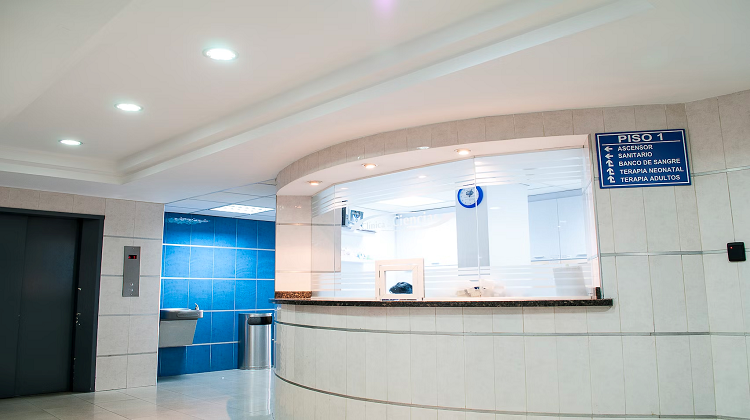
In recent years, boosting patient happiness has grown in importance as a goal for healthcare professionals. A higher incentive payment under the Hospital Value-Based Purchasing (VBP) Program can be obtained for your practice by increasing your patient satisfaction scores in addition to keeping your patients happy and healthy. The Hospital VBP Program pays hospitals according to a rating of the quality of their care, and 25% of this rating is dependent on the experience of the patient with the hospital.
Every employee of a healthcare institution must make a conscious, ongoing effort to improve patient satisfaction. Organizations can reform their processes and improve their reputation by having a solid improvement strategy in place and a thorough grasp of the elements that influence patient satisfaction.
One of the five main suggestions for enhancing the patient experience is to question this belief and use patient happiness as a balance measure instead.
- Use patient happiness as a checkpoint rather than a motivator for results.
- Examine full care teams rather than a single provider.
- To comprehend data and take action on it, use healthcare analytics.
- Make use of cutting-edge technology.
- Increase worker involvement.
Does higher patient satisfaction translate into better health?
The relationship between patient experience and clinical results is hotly contested. While some studies show a correlation, others cast doubt on the veracity of patient feedback and the potential effects it might have on a doctor’s behavior.
Straightforward and Convenient Payments
Even if a patient had a positive experience and received outstanding care, a difficult or unpleasant billing process could still leave them unsatisfied and give them a bad rating. Patients may become frustrated when their bills arrive late, contain charges they weren’t expecting, contain errors, or have an antiquated payment method that makes it challenging for them to pay for their care.
A patient may become frustrated and become less inclined to pay their bill if they have a query about their account, but your office is unable to respond. The following are some ways your business might enhance the payment process to increase patient satisfaction and maximize revenue flow:
Train Staff to Address Billing Issues
Someone in your office should be able to answer a patient’s concern when they call with a query about their bill or promptly direct them to someone who can. Train your front desk staff to be able to respond to patients’ inquiries about charges, payment plans, and other billing-related general inquiries.
Even better, consider appointing a staff person to act as a financial advocate who can help your patients comprehend their expenses or act as a point of contact for your third-party billing provider.
Be diligent about price transparency
Receiving unexpected costs on patients’ medical bills is one of the main causes of patient annoyance. Patients may have believed that the service would be paid for by their insurance company, or they may have just been taken aback by a price that was significantly greater than expected. By providing solutions that increase pricing transparency, we can lessen unpleasant shocks and provide patients with the information they need to make an informed choice about their care.

Medical billing Trends
RCM is one of the most reliable medical billing stats. Leading US businesses such as GE Healthcare, eClinicalWorks, R1 RCM, Athenahealth, etc., offer to fully take over RCM (Revenue Cycle Management. This would help to reduce and tackle revenue leakage, mainly for larger providers. Moreover, the average hospital bill over $10,000 has $1,300 in error.
One of the main developments in medical billing is the requirement for automating the tasks that take the longest. Errors in patient registration, verification of insurance, claim submission, and payment denial management must all be eliminated in order to reach this objective.
Additionally, it calls for the time-consuming process of automating medical coding, which all medical practices, irrespective of size, must do. And what exactly is medical coding? Furthermore, why could it result in extra costs or mistakes?
What can be done to increase patient satisfaction?
Creating an atmosphere where patients have a pleasant overall experience with all members of their medical team is a key component of very effective tactics for raising patient satisfaction levels. Follow these simple actions if healthcare administrators want to raise their scores:
Modernize Old Systems
Internal system modernization is essential for enhancing the patient experience. Patient satisfaction can be significantly impacted by even little changes like nurse call buttons, waiting room systems, and appointment scheduling software.
Obtain Patient Opinions
Obtaining patient feedback is a must for maximizing patient satisfaction. By collecting patient feedback, you can learn about the patients’ true opinions and how they feel about their visits to your facility. You will be able to gain genuine insight into the procedures and processes taking place in your hospital by taking prompt action on patient input. Utilizing patient feedback software, you can get input. You can complete surveys in a variety of methods to get patient feedback.
After hospital discharge, you can send the inpatients a survey by email and SMS. To collect real-time feedback from patients after sessions, you can install iPads in areas like the clinic reception or waiting rooms.
To enhance the patient experience, you might ask survey questions about patient satisfaction.
Be Patient While They Wait
Patients waiting in the reception area should be treated with respect by physicians and other department team members, who should also do their utmost to make the wait appear as brief as possible. This goes hand in hand with having realistic expectations of the time.
Educate patients and make sure your waiting space is stocked with TVs, magazines, brochures, and other items patients can look at. Patients are less likely to become irritated by lengthier wait periods if they have something to do while they wait and are often updated.
Patient Experience Is a Key Metric for a System’s Overall Performance Health
Health systems are continuing to change how they view the patient experience, viewing it less as a legal necessity to be satisfied and more as a key sign of how well-rounded a healthcare institution is. A wonderful patient experience is influenced by everyone and everything inside a health system, from the admissions clerk to a clean room—driven by the entire health system’s infrastructure. It goes beyond just the patient-clinician relationship.
Boost the atmosphere in the hospital
One of the least soothing places to be is a hospital. The fast-paced movement, antiseptic surroundings, harsh lighting, and noise don’t exactly promote relaxation. Hospitals are starting to modernize their interior design to make the space feel cozier and address the noise pollution problem.

In a recent Huffington Post story, it was said that hospitals should have noise levels of 30 decibels or below because nighttime noise levels exceeding 55 decibels can disrupt sleep and even increase the risk of heart disease. The Mayo Clinic found that some institutions have nighttime noise levels of more than 100 dB. Patients and employees have been known to suffer from alarm fatigue. By creating quieter devices, hospitals can innovate to help patients unwind.
Overall Hospital Evaluation
This measurement is referred to as a “global” measure since it considers the numerous factors that patients use to evaluate the hospital as a whole during their inpatient stay. It is a reflection of each of the previously discussed composite and individual scores. Therefore, concentrating on achieving good performance on those metrics will generally boost this score as well.
Conclusion
The best strategy to increase patient happiness is generally to act sincerely and consistently. There are staff members who keep a practice running smoothly behind every brilliant doctor. Since staff members are frequently the patients’ first point of contact, they need a variety of professional abilities.
Your personnel has to be well-versed in the services you offer and trained to show each patient respect and kindness. The majority of these abilities involve more than just ethical hiring procedures; they also call for practice-specific training.
Business Builders has developed a number of special healthcare staff training packages to suit the particular requirements of your practice. These training programs will evaluate your current procedures, make suggestions for enhancements, put them into practice, and develop a culture that excels in patient satisfaction. Each training course can be presented separately or as a whole.




